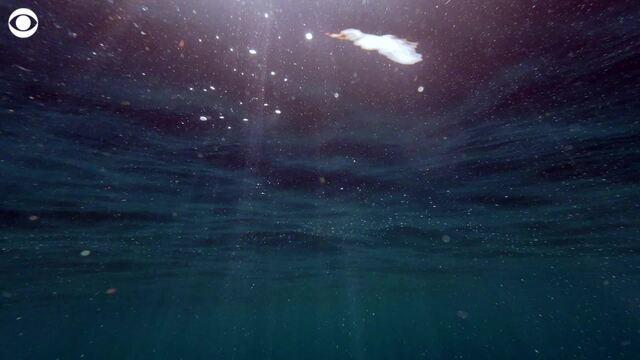▶ Watch Video: The State of the Global Climate: Ocean heat
The Arctic is heating up at a record rate, plastic pollution is “choking the seas,” fish stocks are being depleted, acidity rates are rising and ocean waters are warming and rising. U.N. Secretary-General Antonio Guterres says the world is facing an “ocean emergency,” and he’s hoping that after years of false starts, world leaders might finally agree on some rules aimed at averting disaster.
The U.N. kicked off an 11-day conference on Monday aimed at creating a new, legally-binding global treaty to govern use of the high seas. The ambition of the treaty is to reverse the current downward trend in biodiversity and protect marine life, while also guaranteeing safe access to international waters.
It has already been a long time coming.
Since 2017, when the U.N. first declared its ambition to hash out a treaty based on the 1982 U.N. Law of the Seas (UNCLOS), which established rules for ocean usage and sovereignty, organizers have convened five times.
The General Assembly has created a draft treaty, but despite the negotiators meetings over the last five years, there’s been no agreement. Now there’s a glimmer of hope. Here’s what you need to know about this international effort to preserve our world’s oceans for generations to come.
What would a High Seas Treaty do?
The “high seas” refers to international waters — sea space that doesn’t fall within any nation’s sovereign or extended maritime zone.
About two-thirds of the world’s water is considered high seas and, as of today, only about 1% of that area is covered by international agreements on fishing and other resource extraction.
The high seas treaty, if agreed, would create a new global body to enforce rules laid out to protect about 30% of the world’s oceans by 2030.
It would extend international law beyond countries’ territorial waters and exclusive economic zones (EEZs), which extend 200 miles from any nation’s coastline, t0 cover a major portion of the currently unprotected waters from threats such as overfishing and unchecked seafloor mining.
“This treaty will provide a first-ever legal framework for the protection of biodiversity in international waters, including the creation of ocean sanctuaries, environmental rules, and the application of Environmental Impact Assessments preceding any human activities on the waters that make up nearly half of the planet,” Arlo Hemphill, Greenpeace USA Sanctuaries Project Lead told CBS News.
Similar to the Climate Treaty and the Convention on Biological Diversity, it would function in a way “in which member states meet regularly to agree on implementation of the treaty,” explained Hemphill.
He noted that within the international community, there are still “areas of discord.”
Why has an agreement been so hard to reach?
The draft treaty would establish patches of ocean known as Marine Protected Areas, where there would have to be environmental impact studies before any deep-sea mining or exploration could take place.
Many nations have concerns over how such laws would impact their ability to fish and mine – especially given the rising cost of energy and the rush for minerals used in the production of batteries and other technology in high demand.
The Biden administration has been supportive.
Assistant Secretary of State Monica Medina, the administration’s lead on ocean matters, called the “conclusion of a strong and effective” agreement on a treaty a priority, saying it “represents a once in a lifetime opportunity to reset our relationship with the high seas.”
Russia, as another example, is ostensibly in favor of the treaty, but wants an exclusion added for fisheries.
Hope and pressure
Despite all the individual countries’ specific concerns, organizers have been positive about the chances that an agreement can be reached in this round of negotiations, which ends on August 26.
“After the great successes gained for the ocean’s health this year through UNEA5 in Nairobi (on plastic pollution), the WTO Ministerial in Geneva (on ending subsidies for harmful fisheries), and UNOC in Lisbon (which launched a number of innovative solutions), I’m confident that Member States will ride 2022’s positive wave towards a healthy ocean by concluding a high seas treaty in New York this month,” the U.N. Secretary-General’s Special Envoy for the Ocean’s, Peter Thomson, told CBS News.
“Over the next two weeks, let us try to deliver on an agreement — fair, balanced, implementable — and attract universal participation,” said Rena Lee, a diplomat from Singapore who’s chairing the conference, in her opening remarks. She called on nations to show “the utmost flexibility to find the consensus we need.”
Organizations that have pushed for a high seas treaty for years say it’s vital that countries do reach an agreement in this round of talks, for the sake of us all.
Liz Karan, project director at the Pew Charitable Trusts’ Ocean life on the High Seas Campaign, said bluntly that humanity was facing “an existential threat,” warning that “the ocean doesn’t need people, people need the ocean.”



































